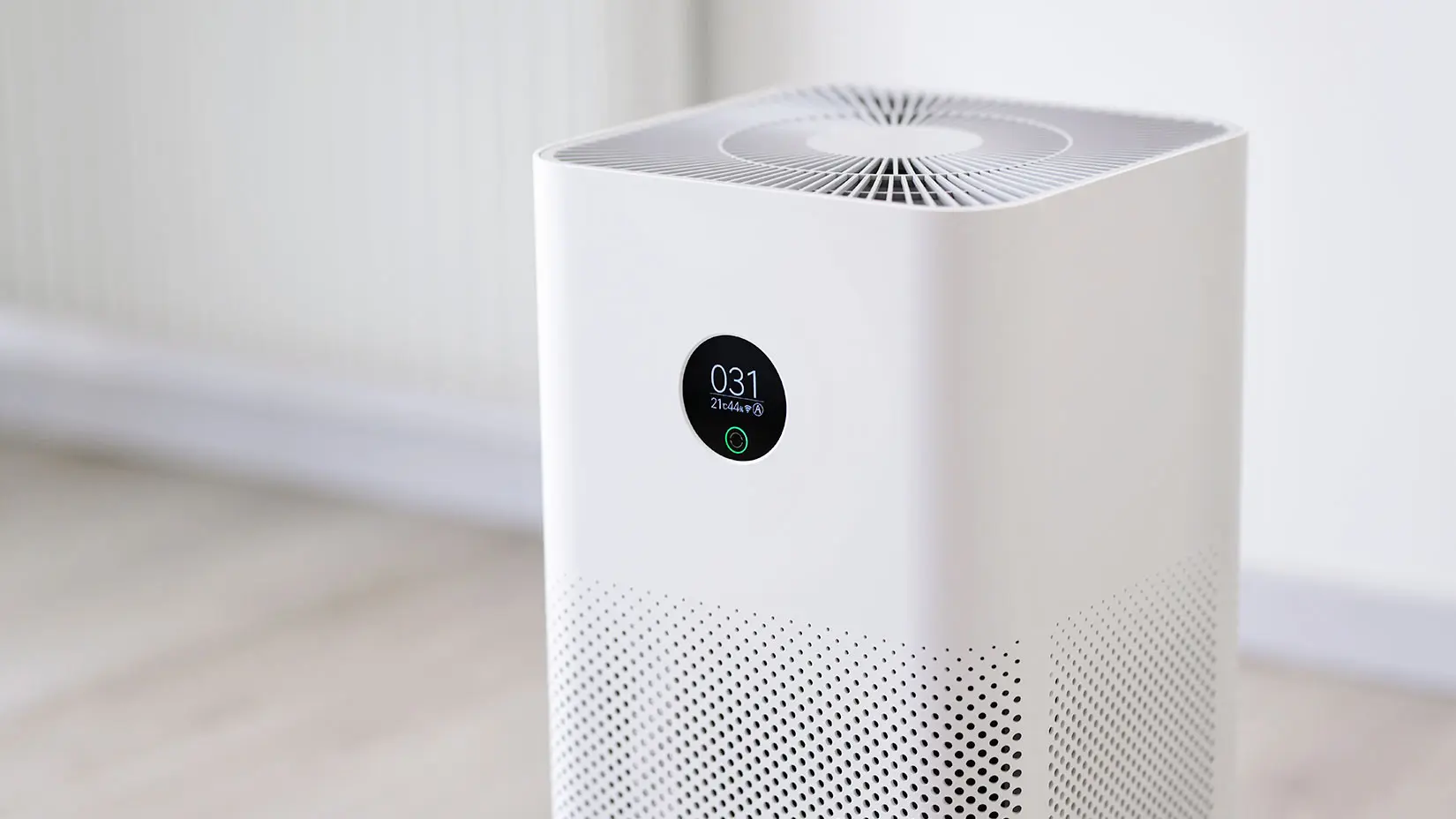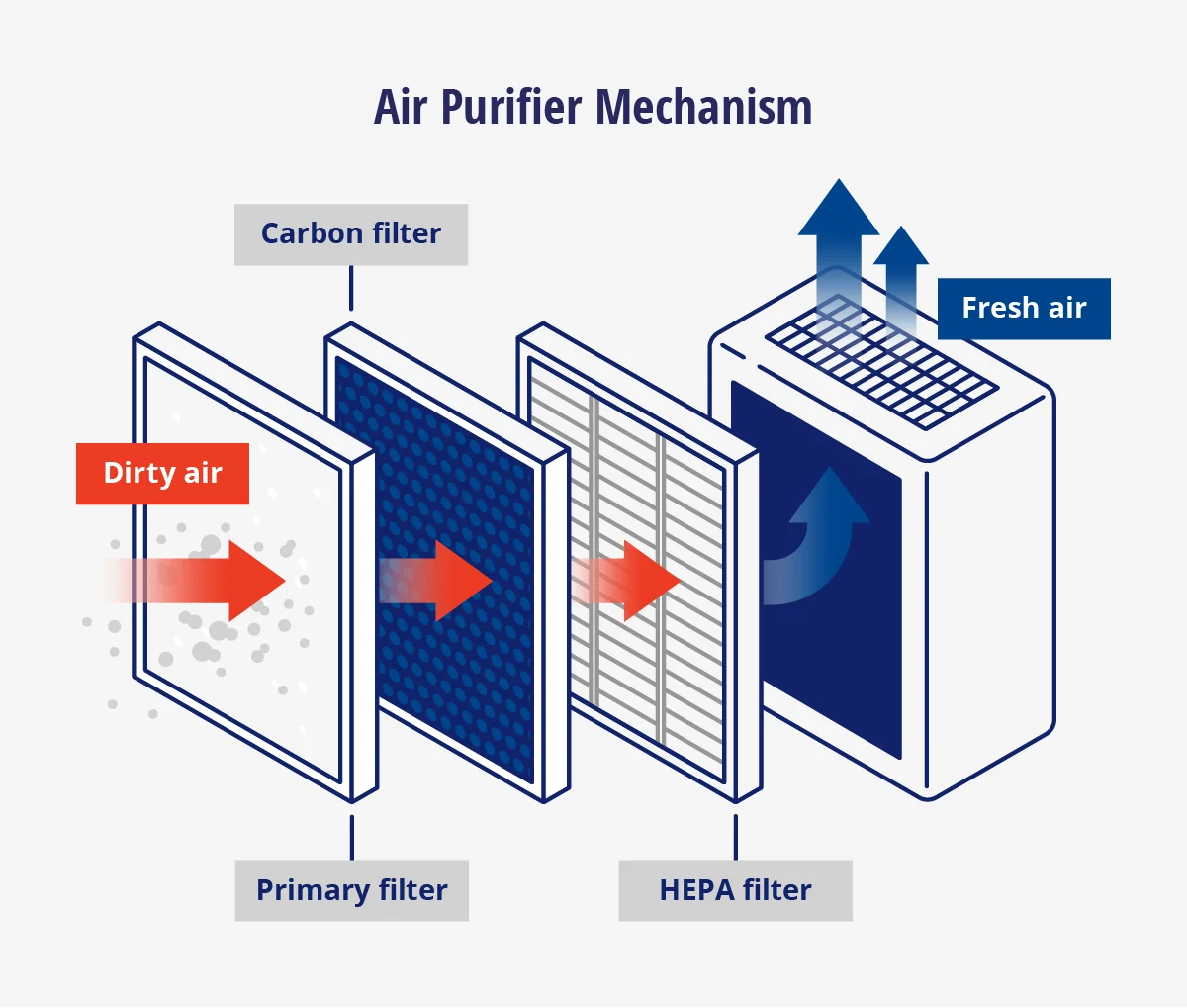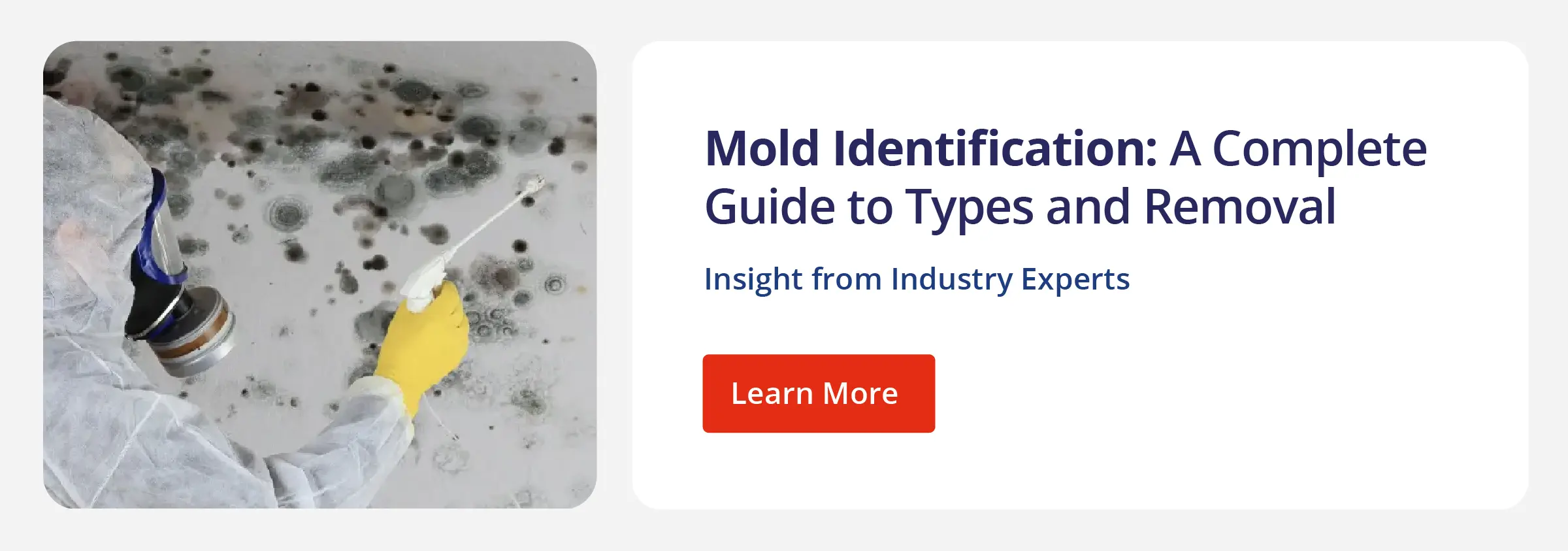
Yes, air purifiers can help combat mold, especially those with HEPA filters. However, if mold is present, it is important to find and treat the root cause with the help of professional mold removal services.
Mold is one of the most common types of fungi that grow in dark, humid, and warm environments. Apart from being visually unappealing, breathing in mold spores can also lead to various health issues such as sneezing, itching, wheezing, and fatigue. One of the most important factors in preventing mold spread is to get rid of the mold spores in the air, which can be attained by using an air purifier with a high-efficiency particulate air (HEPA) filter.
Air purifiers trap and capture mold spores from the air, preventing them from spreading further. The growing demand for air purifiers is evident from the projected market growth of 6.9% from 2023 to 2033, indicating their popularity and benefits.
This guide will explore how air purifiers prevent the spread of mold spores in the air that aids in mold prevention and provide you with essential considerations that will help you select the right air purifier for your space.
What Is Mold?
Mold is a fungus that grows in damp, warm places. It spreads by releasing tiny spores that float into the air and land on humid surfaces. Common sources of indoor mold include leaks, high humidity, poor ventilation, and damp surfaces like walls and carpets. There are various types of indoor mold with different characteristics, including:
- Aspergillus
- Penicillium
- Cladosporium
- Stachybotrys (often called black mold)
Mold exposure can cause health problems, especially for people with allergies, asthma, or weak immune systems. Breathing in mold spores can lead to allergic reactions, coughing, wheezing, and worsening asthma symptoms. Some molds like Stachybotrys — which originates from moisture from water damage — can cause more severe health issues such as mental fatigue and severe nasal congestion with prolonged exposure.
Once a property is infected, mold spreads quickly and can damage it. Plus, it can continue to affect your health if left untreated. That’s why it’s crucial to take action as soon as mold is identified for a healthy indoor environment.
Do Air Purifiers Help With Mold?
Yes, air purifiers can effectively capture mold spores, keeping the air free from airborne allergens. Air purifiers — especially the ones with HEPA filters — are designed to eliminate 99.97% of mold, dust, pollen, and other airborne particles.
How Do Air Purifiers Help With Mold?
How exactly does an air purifier work to capture mold? Let’s look at the air purifier’s mechanism in detail.

1. Air intake: The air purifier pulls air from the surrounding area through its intake vents. This ensures all air within the room is continuously filtered for maximum purification.
2. Primary filter: The air then enters the main filtration stage where it passes through the primary filtration mechanism — also known as a pre-filter. The primary filter works to trap larger air particles such as hair and dust.
3. Carbon filter: After the primary filter, the activated carbon filters absorb odors, gasses, and volatile organic compounds (VOCs) from the air. The activated carbon material contains millions of tiny pores that trap and absorb these odor-causing molecules — resulting in fresher, cleaner air. This additional filtration stage complements the primary HEPA filter by addressing specific pollutants like smoke, cooking odors, and household chemicals, providing a more comprehensive air purification solution.
4. HEPA filter: After the air passes through the carbon filter, the HEPA filter captures microscopic particles such as pollen, mold spores, and pet dander. HEPA filter effectively traps any other airborne contaminants as small as 0.03 microns.
5. Purified air release: After moving through the HEPA filter, the purified air is released into the room, free from the captured mold particles and pollutants.
Considerations When Purchasing Air Purifiers for Mold
When purchasing air purifiers specifically for mold mitigation, several key considerations can help make an informed decision.
1. Filtration Technology
Choose air purifiers with HEPA filters. The fine mesh materials used in a HEPA filter are highly effective in capturing airborne contaminants such as mold spores. Air purifiers equipped with advanced filtration technologies offer a proactive solution to combat mold and improve indoor air quality. However, for persistent mold problems, the most effective course of action is to seek professional mold remediation services.
2. Coverage Area
Make sure to place the air purifier where there is enough room for airflow and that no items obstruct the air purifier’s flow. It’s ideal to place the air purifier at least 6 inches away from any door, window, or wall.
3. Additional Features
Consider air purifiers that offer additional features, such as UV-C light technology or ionizers, as these can provide enhanced mold-fighting capabilities. UV-C light technology utilizes ultraviolet light to target and neutralize airborne mold spores, bacteria, and viruses, effectively reducing their presence in the air. Ionizers release negatively charged ions into the air, which attach to and neutralize positively charged airborne particles like mold spores, causing them to fall out of the air and onto surfaces where they can be easily cleaned.
4. Maintenance Requirements
Consider factors such as filter replacement frequency and ease of cleaning. A HEPA filter should be cleaned every month and replaced every 12-18 months. This ensures optimal performance so the air purifier continues to effectively capture mold spores and other airborne contaminants. Choose an air purifier with easy-to-access filters and straightforward cleaning instructions to simplify maintenance tasks and prolong the lifespan of the device.
5. Sound Level
Some air purifiers can be quite loud while operating, which can be a nuisance, especially if the air purifier is located in a bedroom or office. It is beneficial to conduct a noise test before investing in an air purifier.
How To Identify Mold
Common signs that identify mold infestation include musty odors, visible mold growth on walls, ceilings, or other surfaces, and the presence of water stains indicating past or ongoing moisture issues. Here’s how to check for mold:
- Visual inspection: Conduct a thorough visual inspection of the property. Pay attention to areas prone to moisture buildup, such as bathrooms, kitchens, basements, and around plumbing fixtures. Look for signs of mold growth, including discoloration on walls, ceilings, or other surfaces, as well as musty odors.
- Mold testing kits: DIY kits allow residents to collect a sample from the suspected mold-infested area and send it to the laboratory for mold analysis. However, for the most accurate analysis and to treat the root cause of the mold, contact a professional.
- Moisture meters: Use moisture meters to measure moisture levels, which should ideally be between 30% and 50%, in building materials such as wood, drywall, and insulation. Elevated moisture levels can indicate areas conducive to mold growth.
- Professional mold inspections: For a thorough and accurate inspection, contact a certified mold inspector like HouseMaster® for professional residential mold testing. Professionals have the expertise and specialized equipment to identify mold growth, assess moisture levels, and provide recommendations for remediation.
| Types of Indoor Mold and Their Causes | |
| Acremonium |
|
| Alternaria |
|
| Aspergillus |
|
| Chaetomium |
|
| Cladosporium |
|
Air Purifier FAQ
How Long Does It Take for an Air Purifier To Remove Mold?
It can take anywhere from 30 minutes to several hours for an air purifier to remove mold spores in the air. Let the air purifier run 24/7 to keep the air in the room clean.
What’s Better for Mold: Air Purifier or Dehumidifier?
For mold prevention, a dehumidifier is better, as it reduces moisture levels, inhibiting mold growth. However, an air purifier can complement this by removing airborne mold spores, improving indoor air quality. Both devices can work together for comprehensive mold control.
What Kills Mold Spores in the Air?
In addition to using an air purifier, try spraying tea tree oil mixed with water to effectively kill mold spores in the air. The antifungal properties of tea tree oil make it a natural and efficient solution to combat airborne mold and improve indoor air quality.
Does a HEPA Filter Remove Mold?
Yes, a HEPA filter is efficient enough to trap air particles as tiny as 0.3 microns, including mold spores — which are typically 3 to 40 microns in size. A HEPA filter helps improve indoor air quality and reduce the presence of mold in the environment by trapping spores as air passes through the filter.
Professional Mold Removal Services
.webp)
Rainbow Restoration’s mold removal and remediation professionals are equipped with advanced tools such as moisture meters, infrared cameras, and HEPA filtration systems, enabling them to accurately assess mold growth and identify hidden infestations.
The process typically involves a comprehensive inspection to determine the extent of the mold problem, followed by containment measures to prevent spores from spreading further. Remediation techniques include thorough cleaning, disinfection, and removal of mold-infested materials.
Rainbow Restoration also uses air scrubbers and dehumidifiers to create a controlled environment and safely remove mold. From initial assessment to meticulous remediation, professional mold cleaning services ensure a thorough and effective solution to safeguard your indoor environment.
Request mold remediation services today.
This article is intended for general informational purposes only and may not be applicable to every situation. You are responsible for determining the proper course of action for your property. Services should be performed by licensed and experienced professionals. Rainbow Restoration is not responsible for any damages that occur as a result of this blog content or your actions. For the most accurate guidance, contact a Rainbow Restoration professional for a custom, on-site assessment.

